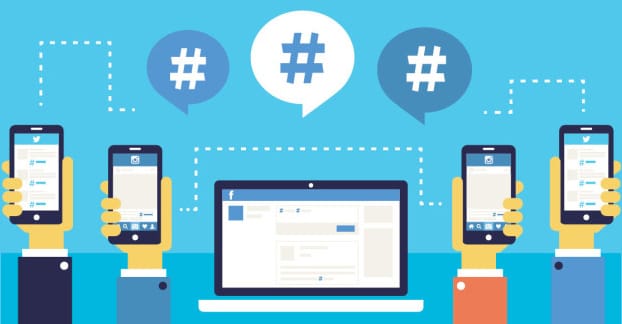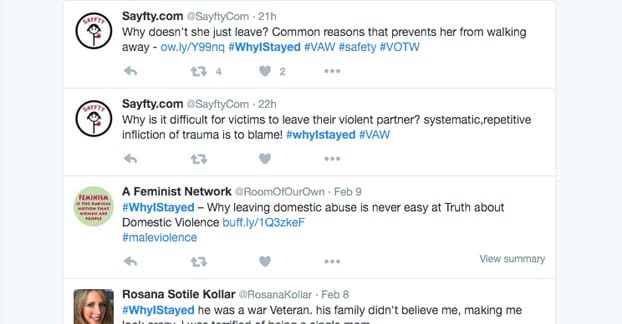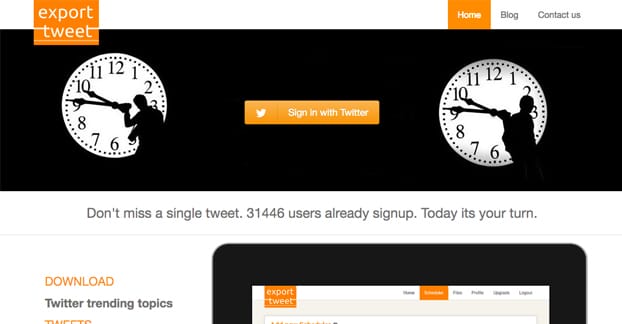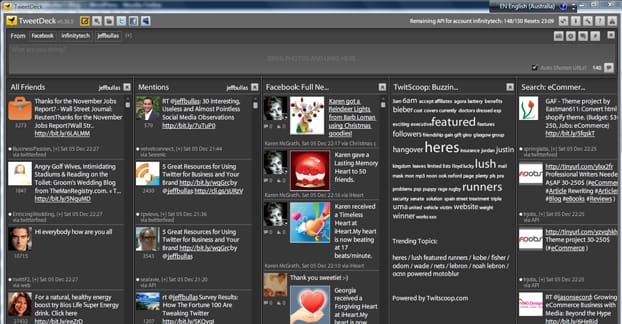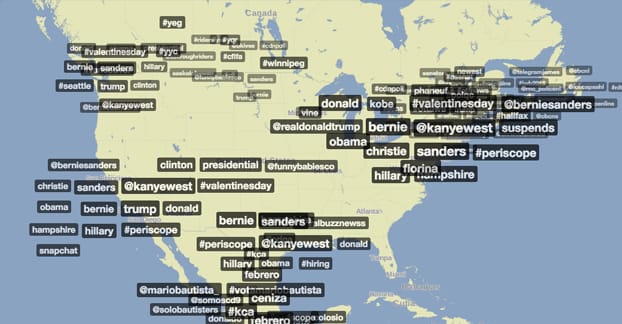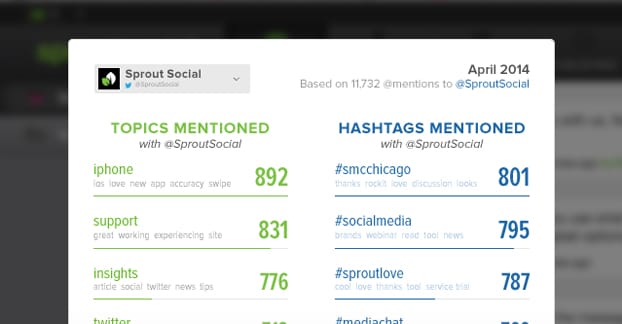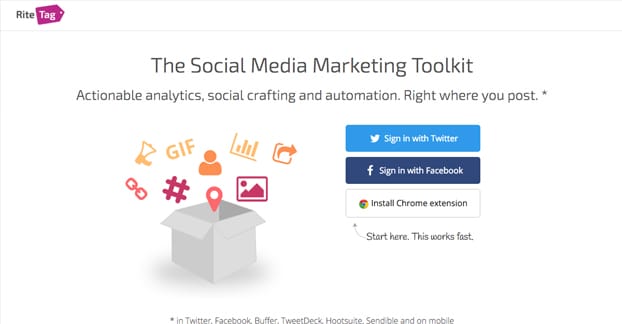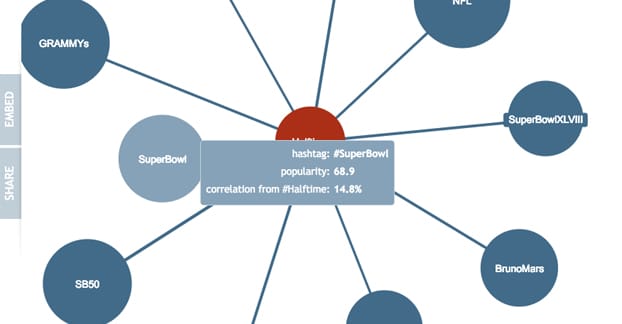Hashtags on Twitter are incredibly powerful. Even just using hashtags – regardless of what they are – boosts visibility and engagement. They’re little value-added tags that bring both a bit of punch and a means of categorizing content.
There are, in general, two types of hashtags. These are the broad categories “branded” and “generic.” You should be using a mix of both, but you need to know what they are and how to use them.
Branded hashtags are any tags you create that include the name of your brand, a common brand term, or the name of a particular ad campaign. Some examples include things like #ShareACoke for Coke’s campaign, or #Nike, #Jordans, or some other shoe-related tag.
Branded hashtags start off small; they have no following because they’re new. You’ve made them up from scratch. Ideally, no one has used them before, except perhaps you in a previous campaign. In fact, before you create a branded tag, you need to make sure it hasn’t been used before, or is in use currently. The last thing you want to do is try to hijack an active tag by calling it a tag for your brand. The people actually using the tag will not take kindly to it.
By contrast, generic tags are not yours to create or control. They exist already. These are tags like #cute or #caturday, tags that don’t associate with your brand at all.
The primary purpose of generic tags is to participate in a conversation that’s already taking place. People go to view the #cute tag because they want to see something cute. That’s an opportunity for you to step in and share something cute, like a picture of a puppy wearing a branded hat. It’s subtle advertising but it’s not direct advertising; it’s just participation.
There’s a third sort of tag, though it can be considered generic as well. It’s the “trending” tag, but not every tag that trends falls into this category. You could also call it the “activism” tag, because that’s what it’s mostly used for. Things like #BlackLivesMatter or #WhyIStayed are trending tags. They’re not branded, so they’re technically generic, but they’re actually covering a very specific topic.
When you’re choosing tags to use in your marketing, you need to make sure you understand the context of the tag. The reason I picked #WhyIStayed as an example is because a brand actually did put their foot in their mouth with it. DiGiorno used it as a flippant “I stuck around because they had pizza” advertisement. The problem is, the “stuck around” referenced by the tag was domestic abuse. The pizza brand took a serious discussion and tried to make it flippant, likely without ever knowing what the tag was about. It hurt them, and people will continue referencing it over and over for the rest of time.
Keep that one core tenet in mind whenever you’re looking to use a hashtag, no matter what that tag is. Browse it and make sure you understand it before you use it. Otherwise, you might end up with an entry for your company on a list like the one I linked.
So, how do you find tags you can use for your marketing? There are a few options.
5. Make Them Up
Making up tags is a time-honored tradition. At some point, every tag was made up by someone. None of them are cosmic pillars that existed before the dark of time. Though, we have it on good authority that the very first kitten born was adorable, so maybe #cute was one of the foundational elements of life.
Making up tags has some advantages and disadvantages. For one thing, a lot of people have been making up a lot of tags long before you started. That means a lot of the possible tags you could make up have already been made up and used for something. This just further stresses the importance of looking them up before you use them. You never know what strange use someone had for a tag.
Generally, you’re going to have more success making up branded tags than you will generic tags. It’s rare that a generic tag catches on to trend when you’re making it up from scratch. A branded tag is much easier to establish in its purpose, which is to become a central location for that part of your marketing.
You can try to guess at generic tags and hope you catch something that people are actively using, but that can be a time consuming process of trial and error. Rather than that, try a different technique; that’s why I have four more, after all.
4. Check Competitor Tweets
Competitor research is always a source of valuable information. The process of scraping hashtags will be tedious, but it can get you an idea of where you might want to start.
Step one: Identify your closest competitors. These are people who have businesses and, more importantly, audiences very similar to yours. Pepsi and Coke are close competitors. Nike and Reebok are close competitors. You don’t want to try to draw a comparison between, say, Nike – makers of exercise apparel – and Macys, which just sells a wide range of clothing.
Step two: pull a record of the tweets your competitor has made. I recommend using a tool to do this, something like Export Tweet will do just fine. This should give you a nice file with all of the tweets that user has made publicly in the time frame you specify.
Step three: Pull the hashtags. You can use macros in programs like Excel to take anything that matches a certain description – in this case, starts with # – and pastes it in the next column. This will give you a list of hashtags on each tweet. Tweets with no tags will have empty cells, and you can safely remove those.
Optionally, you can harvest the likes and retweets for each tweet as well. This way, you can sort the columns to see which tweets have the best engagement, and what hashtags are being used in those tweets.
Step four: Remove branded hashtags. These are valueless to you; you can’t take over the branded tags of your competitors, and using them is just likely to give the competition more promotion.
What you’re left with is a good list of hashtags, sorted by engagement rates if you did that optional step. This will give you an idea of what sort of tags you can target to reach the kinds of people your competition is reaching.
3. Monitor Brand Mentions
This technique is similar to competitive intelligence in some ways, but it’s likely to find you some different tags. For this one, engagement rate won’t be very useful, and some of the data will be redundant because it’s using your branded tags. That’s okay, though.
Step one: Set up brand monitoring on Twitter. There are a ton of different ways you can do this, from using tools like TweetDeck or SproutSocial, to just writing scripts or running custom Twitter searches on a schedule. How you do it is up to you. I recommend monitoring your brand name without the @, as well as any common names for your brand, names for your products, and branded hashtags that a user might forget to use the # for.
Step two: Check this monitoring periodically looking for relevant tweets. There will be a lot of content here. Some people will just be mentioning a product they just bought. Some will be looking for customer service, which you can provide, but that’s not part of the technique. Some will be talking about your ads or your products, and they might use your branded hashtags. The important ones, though, are the people talking about you or your products and using generic hashtags.
Pull these hashtags and keep an eye on them. Your customers generally have some idea of how to reach each other, or at least what tags to use to express their feelings. If some tags stand out more than others, consider adding them to your rotation.
2. Watch the Twitter Sidebar
All of the above methods will find you hashtags you can use, but they won’t necessarily find you tags that have huge volumes of traffic and have reached the level of trending, be it locally or globally. For that, you need to pay attention to what Twitter actually publishes.
At all times on the Twitter page, there’s a sidebar with trending tags. This is a mixture of three types of tags; globally trending tags, tags trending locally as determined by your location and IP address, and sponsored tags that are trending because of the payment of advertisers.
The problem with this method is that a lot of these tags won’t be very useful to you. Trying to jump in and use one without investigation is how errors like #WhyIStayed happen. For example, right now as I write this post, #Sanremo2016 is trending with half a million tweets. That’s a lot of potential users! You should tweet to that tag now, huh? Well, no. It’s an Italian music festival and competition, and it’s not relevant to most brands unless you’re Italian, global, or musical.
1. Use Tools
Finally, we come upon the lengthiest section and the best method. This is where you decide all of the above methods are terrible an inefficient. You’ve had enough; you want some professional-level tools to do your hashtag monitoring and recommendation for you. Well, you’re in luck; you have several options.
Option one: Trendsmap
This tool is a map overlaid with geographically trending tags and users. As you might expect, on the national level you have a lot of common Superbowl tweet tags given the recency of the game. You also have a lot of political tags and accounts, since it’s election year. Yes, I’m dating this post.
The real power of Trendsmap is seeing more local trends, so you can tailor your tags to your region. This is only valuable if you can take advantage of a regional audience, but that’s not generally a problem. It also lets you see some interesting trends and their evolution as they move around the country or across the globe.
Option two: Sprout Social
Sprout Social is a broad-featured all-around social media manager and analytics suite, but the portion we’re really interested in right now is the Trends Report. Remember that technique above, where you monitor your brand and look for the tags people are using? It’s tedious and takes a long time to do, right? Well, that’s what the Trends Report does for you. It scans your brand and your mentions, and looks for tags that have been used frequently in conjunction with your brand. On top of giving you a readout of those tags, it gives you common phrases that weren’t tagged, and their frequency. You can even check to see who is mentioning you, and chart the rise and fall of tags over time.
Option three: RiteTag
RiteTag has an amazing browser extension that plays off of their deep trending tags analysis. They analyze different tags for their frequency and their metrics – retweets, reach, image usage, links, and so forth. It also has some semantic analysis, to figure out what topics are commonly used with the tags. The browser extension kicks in when you go to compose a tweet; it actually monitors the topic of your tweet based on keywords and suggests possible tags that will work well with it.
Option four: Hashtagify.me
This is a relationship engine that draws a web of relationships between primary hashtags/topics and sub-topics or related tags. For example, the general tag #Superbowl spreads into various sub-topics, like NFL, Panthers, Broncos, Halftime, Football, and others. You can use this tool to explore topics and look for related tags to find some you might be missing. Each one shows you current tweets, the popularity of the tag, and the relationship correlation with the primary topic. It’s a great little discovery engine.
With these tools at your fingertips, you can go deep into exploring the tags used globally, locally, or centered around your brand. This gives you a great insight into tags you can use, to reach a wider audience and amplify your messages.
